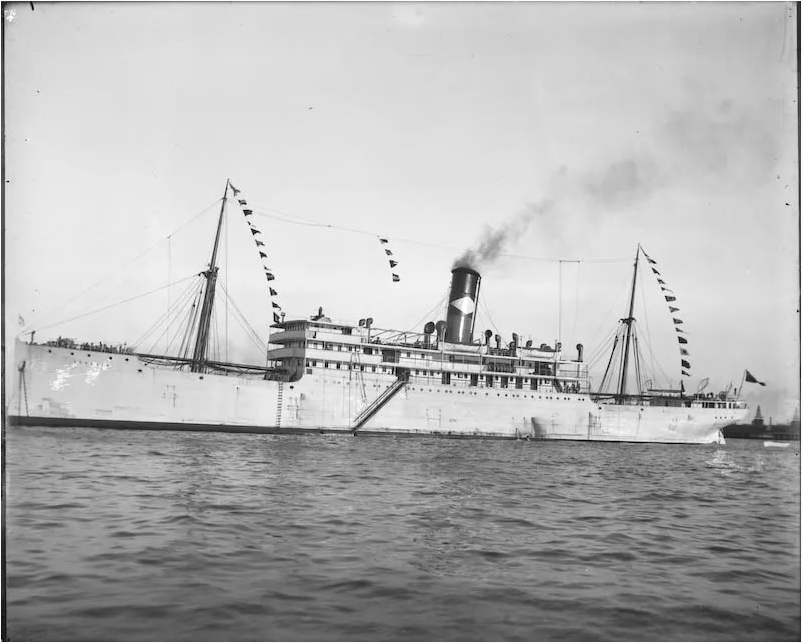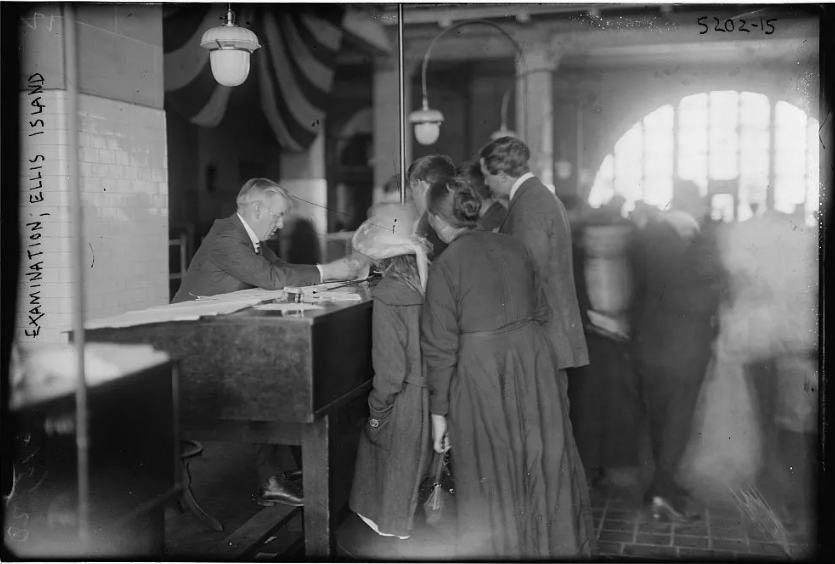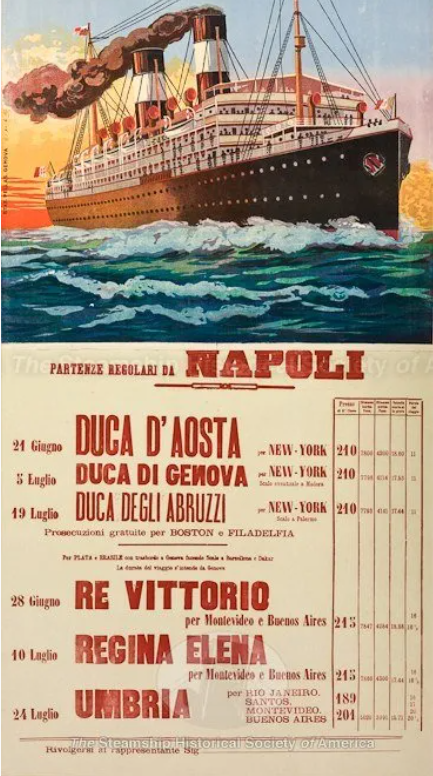About This Lesson
This lesson plan introduces students to the history of refrigerated shipping and its impact on the availability of perishable goods. Students engage in an experiment about which materials are the best thermal insulators. They can read background historical context and engage in extension activities include passenger meal menus from steamships, a historical overview of food preservation, and an audio interview about shipping perishable food today.
Learning Objective:
Students will be able to (a) evaluate materials for their ability to support refrigeration and (b) trace the impact of steamship refrigeration technology on the availability of food.
This lesson is geared toward Middle School (5-8) but could be adapted for different grade levels:
- Elementary (K-4): Teachers should emphasize that energy moves from place to place (warm to cold) and limit the types of insulating materials available for the experiment to 2-3.
- High school (9-12): Students could quantitatively measure temperatures inside the system and in the surroundings or measure the mass of ice. Students could use temperature measurements to calculate thermal energy, create models, and comparing and contrasting materials and or cooling systems (active vs. passive) by cost, safety, and environmental impact.
Begin by asking the class to identify their favorite fruits and vegetables. Which of these foods might not be available without the technology to keep foods cold? Can students name some other foods that rely on refrigeration? How do you think the development of the refrigerator and refrigeration on steamships led to healthier diets? How have other cold innovations may have changed our lives, such as the places we live and how we live throughout the year. Check out our article on air-conditioning on steamships.
Provide students with an Activity Guide with the information and experiment listed below. After students complete the experiment, have them complete the Student Assessment. Find Extension Activities and Education Standards listed at the bottom of our link.
Next Generation Science Standards
Physical Science Content Standard PS3
- 4-PS3-2. Make observations to provide evidence that energy can be transferred from place to place by sound, light, heat, and electric currents
- MS-PS3-3. Apply scientific principles to design, construct, and test a device that either minimizes or maximizes thermal energy transfer; MS-PS3-5. Construct, use, and present arguments to support the claim that when the kinetic energy of an object changes, energy is transferred to or from the object.
- HS-PS3-4. Plan and conduct an investigation to provide evidence that the transfer of thermal energy when two components of different temperature are combined within a closed system results in a more uniform energy distribution among the components in the system (second law of thermodynamics).
Engineering and Technology Content Standard ETS1
- 3-5-ETS1-2. Generate and compare multiple possible solutions to a problem based on how well each is likely to meet the criteria and constraints of the problem; 3-5-ETS1-3. Plan and carry out fair tests in which variables are controlled and failure points are considered to identify aspects of a model or prototype that can be improved.
- MS-ETS1-2. Evaluate competing design solutions using a systematic process to determine how well they meet the criteria and constraints of the problem; MS-ETS1-3. Analyze data from tests to determine similarities and differences among several design solutions to identify the best characteristics of each that can be combined into a new solution to better meet the criteria for success.
- HS-ETS1-2. Design a solution to a complex real-world problem by breaking it down into smaller, more manageable problems that can be solved through engineering; HS-ETS1-3. Evaluate a solution to a complex real-world problem based on prioritized criteria and trade-offs that account for a range of constraints, including cost, safety, reliability, and aesthetics, as well as possible social, cultural, and environmental impacts.
Cross-cutting concept
- Energy and Matter: Energy can be transferred in various ways and between objects.
Science Practices
- Planning and carrying out investigations Constructing explanations and designing solutions
Reading Informational Texts
- K – 5: RI.3 Relationships and connections in historical, scientific, and technical texts.RI.7 Using information from illustrations
- 6 – 12: RI.7 Analyze information presented using different mediaRHST.2 Summarize central ideaRHST.4 Determine the meaning of domain-specific words and phrasesRST.3 Follow a procedure
Science & Engineering Practices Appendix F
6.e ( Grades: 9-12 ): Design, evaluate, and/or refine a solution to a complex real-world problem, based on scientific knowledge, student-generated sources of evidence, prioritized criteria, and tradeoff considerations.
National Standards for History
4.2A.1 – Explain how the major technological developments that revolutionized land and water transportation arose and analyze how they transformed the economy, created international markets, and affected the environment. [Analyze cause-and-effect relationships]
7.3B.1 – Explain how principles of scientific management and technological innovations, including assembly lines, rapid transit, household appliances, and radio, continued to transform production, work, and daily life. [Examine the influence of ideas]















